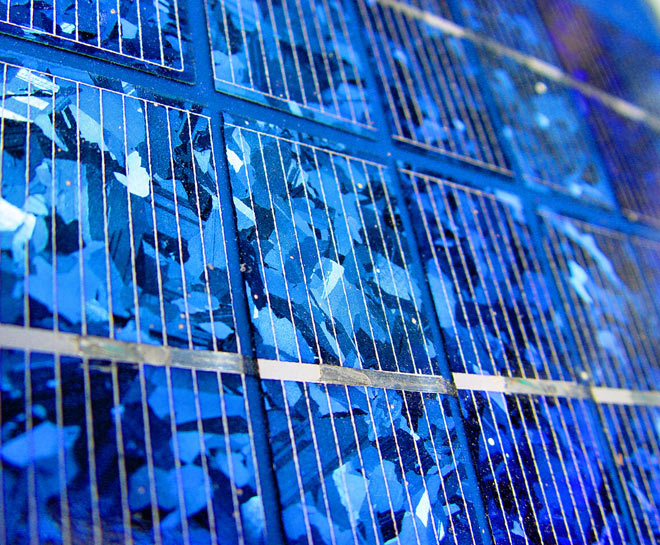Since the beginning of the commodity downturn in 2011-2012, I have been vocal on the need to analyze each metal or mineral individually as they aren’t all created equal. You run the risk of throwing out the “baby with the bath water” and missing investment opportunities.
The same argument holds true when you look at individual demand components for a given metal or mineral. With that in mind, recent research IÂ’ve done on the solar photovoltaic (PV) manufacturing industry has shed light on some astounding growth rates for one metal in particular: silver.
Solar Backgrounder
I donÂ’t intend to enter into the debate about the economics of renewable energy here, but do believe that solar power is going to continue to become more and more mainstream as costs along the entire value chain continue to plummet. A good primer on how PVs work can be found here.
Globally installed PV capacity currently rests at 139 Gigawatts (GW) as of the end of 2013 with another 44.5 GW to be added in 2014. For the sake of reference, one GW is enough electricity to power between 750,000 and 1,000,000 US homes. The 44.5 GW mentioned above is almost a 21% increase y-o-y and equals the output of 10 nuclear reactors, according to Bloomberg. The chart below from the EPIA, shows the dramatic rise in PV capacity.

Source: EPIA
Not surprisingly, Asia leads the charge to install PV capacity. Large populations demanding a higher quality of life against the backdrop of a cleaner environment is a powerful force for growth. China has over 18 GW installed and plans to increase this to 30 GW by 2015. Japan has announced plans to install over 5 GW. India, arguably the single market with the greatest upside for solar power, only has 2.2 MW of PV capacity installed with plans to increase this to 20,000 MW by 2022. Growth in the developed world isnÂ’t as profound, but is still trending positive.
As with almost anything else in life, economics matters and herein is the real reason for the increasing adoption of solar as a source of electricity for industries, commercial enterprises, and consumers.

Our main investing thesis centers on the need for cheap energy to serve as the backbone to a growing middle class. Though solar power is not the cheapest for of electricity available and renewables have their challenges (intermittency, for example), this form of electricity generation is slowly becoming cost competitive with fossil fuels.
As more consumers realize this and industry realizes there is tremendous corporate goodwill and social capital to be gained from diversifying energy sources, the argument for increased solar power in the global energy mix only gets stronger.
Financial market participants would appear to agree with the positive outlook for solar power given the performance of the Guggenheim Solar ETF (TAN: NYSE), up over 52% over the past year.

Silver and Solar: Directly Correlated
The growth rates mentioned above are contingent on a number of factors, but access to affordable raw materials is one of them. Silver is a crucial component of solar panels and is used as a paste in the manufacturing process. Each crystalline silicon solar panel produced (about 85% of the market) uses the equivalent of 20 grams of silver per panel.
According to the Silver Institute, roughly 80 tonnes of silver (2,821,920 ounces) are needed to generate one Gigawatt of electricity from solar.
This may or may not seem like much, but in 2000, only 1 million ounces of silver was used in PV fabrication and by 2008 this had increased to 19 million and then increased again to 64.5 million ounces in 2013. By 2015, the market for silver use in PV fabrication is forecast to be 100 million ounces – roughly 10% of total silver demand. This growth rate will be sustained as long as the overall cost of solar generated electricity becomes increasingly competitive with fossil fuel-based sources.
To be fair, there are threats to this thesis of super normal growth in solar including consolidation of panel producers, removal of subsidies, and dramatically higher silver prices which encourage recycling or substitution. That said if you believe in a future where renewable sources of energy such as solar become more ubiquitous, silver stands to benefit disproportionately set against the backdrop of a slowly improving global economy looking for a diversified mix of energy sources.
The silver market was in a supply deficit of 113 million ounces last year according to The Silver Institute, its widest deficit since 2008. While I canÂ’t explain the fall in the price of silver in the wake of consistent supply deficits, it is clear after reviewing the figures above that both the PV industry and silver offer compelling opportunities all along their respective value chains.
Chris Berry
President of House Mountain Partners LLC and Co-Editor of Disruptive Discoveries Journal
Chris Berry is a well-known writer, speaker, and analyst. He focuses much of his time on Energy Metals – those metals or minerals used in the generation or storage of energy. He is a student of the theory of Convergence emanating from the Emerging World and believes it will have profound effects across the globe in the coming years. Active on the speaking circuit throughout the world and frequently quoted in the press, Chris spent 15 years working across various roles in sales and brokerage on Wall Street before shifting focus and taking control of his financial destiny.He is also a Senior Editor at Investor Intel. He holds an MBA in Finance with an international focus from Fordham University, and a BA in International Studies from The Virginia Military Institute. Please visit www.discoveryinvesting.com and www.house-mountain.com for more information and registration for free newsletter as well as his disclaimer.
